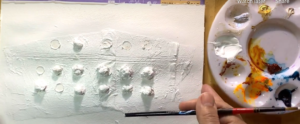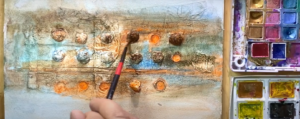Using industrial materials like rubber and silicone to create beautiful artwork offers a unique blend of creativity and innovation. These materials, often associated with functionality, can be transformed into striking pieces that challenge traditional art forms. Start by exploring the diverse textures and colors available in rubber and silicone, which can range from vibrant hues to subtle tones, allowing for a wide variety of artistic expressions.
Molding & Layering

Incorporating techniques such as molding, layering, and texturing can add depth and dimension to your creations. For instance, silicone can be poured into molds to create intricate shapes, while rubber, such as industrial rubber and gasket, can be cut, stretched, or painted to achieve different effects. Experimenting with these materials also encourages an exploration of form and structure, resulting in visually captivating pieces that draw the viewer in.
Moreover, the durability and flexibility of rubber and silicone make them suitable for both indoor and outdoor installations, expanding the possibilities for showcasing your work. As you create, consider how these industrial materials can convey themes of resilience and adaptability, reflecting the evolving nature of art itself. By embracing rubber and silicone, you can push the boundaries of traditional art and produce stunning pieces that invite conversation and admiration.
Abstract Industrial Artwork
Abstract artwork often relies on unconventional materials to evoke emotion and challenge perceptions, pushing the boundaries of traditional artistic mediums. Artists might utilize everyday objects such as discarded plastic, metal scraps, or fabric remnants to create textured compositions that tell a story of transformation and renewal. The juxtaposition of these materials can highlight the beauty in imperfection and impermanence, inviting viewers to engage with the piece on multiple levels.
 Incorporating mixed media techniques further enhances the abstract aesthetic, allowing for layering and experimentation with color, form, and texture. Materials like paint, resin, or even natural elements such as sand or wood can be combined to create depth and movement, drawing the viewer’s eye across the canvas. The unpredictability of working with such diverse materials often leads to spontaneous and innovative results, making each piece unique.
Incorporating mixed media techniques further enhances the abstract aesthetic, allowing for layering and experimentation with color, form, and texture. Materials like paint, resin, or even natural elements such as sand or wood can be combined to create depth and movement, drawing the viewer’s eye across the canvas. The unpredictability of working with such diverse materials often leads to spontaneous and innovative results, making each piece unique.
Additionally, abstract art can serve as a commentary on contemporary issues, with artists using recycled or industrial materials to address themes of consumerism and environmental sustainability. By embracing a wide range of abstract materials, artists can create thought-provoking works that resonate deeply, encouraging audiences to explore their interpretations and emotional responses. This approach not only enriches the artistic experience but also reinforces the idea that beauty can be found in the most unexpected places.